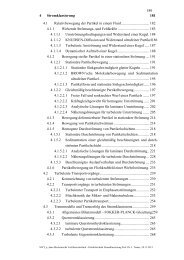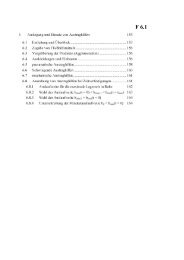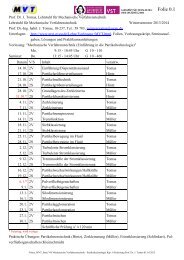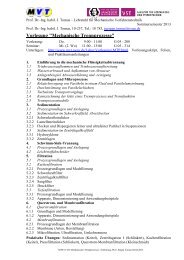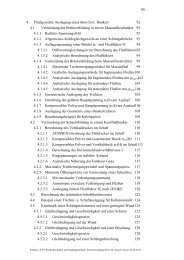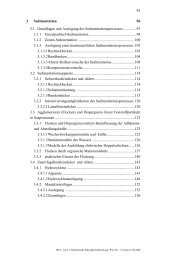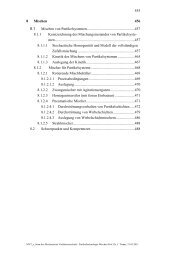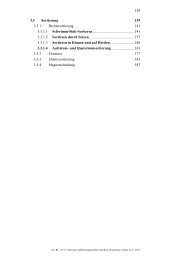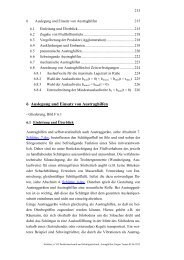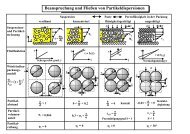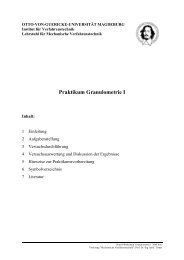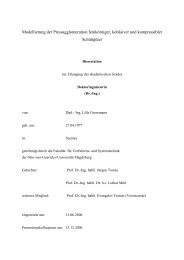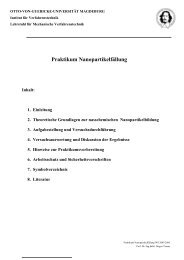Abstract Keywords:
Abstract Keywords:
Abstract Keywords:
You also want an ePaper? Increase the reach of your titles
YUMPU automatically turns print PDFs into web optimized ePapers that Google loves.
The force experienced by wall during impaction by DEM simulation is shown in the<br />
figure 7. It can be seen from the figure that almost the crack is initiated at the same<br />
force, which is shown by the first small peaks for different velocity in the graph. The<br />
rise in peak shows the forced gain by the ball because of applied velocity and the<br />
sudden fall in peak shows the crack propagated inside the ball and the energy is<br />
consumed for generating the new surface.<br />
Experiments<br />
The impact experiments are carried out with our pneumatic cannon [2] as shown in<br />
figure 8, which works with acclerating principle by air pressure. The pneumatic<br />
cannon allows adjustment of different stressing conditions in different velocities as a<br />
function of air pressure. The test rig consits of two main parts, air pressure unit and<br />
acclerating unit. The operating principle of pneumatic cannon is as follows. Firstly,<br />
the test sample is loaded with the cartridge in the accelerating tube. The test sample<br />
may be the one which is to be crushed, generally, a concrete ball or waste materials.<br />
After loading, the accelerating tube is closed carefully and the compressor is allowed<br />
to fill the air in the pressure tank. Once, the required pressure reaches the tank, the<br />
valve is opened and immediately, the sample along with the cartridges accelerates in<br />
the tube and impinges in the target made up of strong steel alloy and crushes. All<br />
pressures and velocities are monitored simultaneously and recorded in the computer<br />
for analysis. The test rig can amounts for maximum pressure of 3 MPa with sample<br />
mass of 1 – 4 kg. The sample material can be accelerated upto 300 m/s. The<br />
crushing process can be observed through the high speed camera at 200 pictures per<br />
second.<br />
A large number of balls were impacted to get the consistent result. The concrete ball<br />
of 150 mm diameter of B35 strength category were chosen for the experiment. The<br />
generated fragments after impaction were collected in the bin as situated in the<br />
cannon at outlet side. Each ball was coloured with different colours in different sides<br />
before impaction. After, each impaction the fragmented parts were collected and<br />
assembeled according to the color. The assembeled fragmented parts are shown in<br />
figure 9 b, 10 b and 11b for different velocitiesof 7.7 m/s, 21 m/s and 39 m/s<br />
respectively. It is clear from the figure that, every assembeled ball has lost its conical<br />
or semi elleptical shape on the impacted side. This shows the disturbed region has<br />
the conical shape as predicted by continuum method. The increase in impact velocity<br />
causes the increase in contact diamter with the target and expand in the cone like<br />
region. This conical lost region is the one, called cone of fines. The meridian cracks<br />
and secondary craks are also seen in the figure. The meridian cracks move in the<br />
direction of the impact like orange pieces. The secondary cracks are not in parallel to<br />
the meridian craks. Generally, the secondary craks are perpendicular to the meridian<br />
craks but not all secondary cracks. The impact speed causes the cone of fines to<br />
expand more and lose in remaining cone. Hence, it can be seen that as the cone of<br />
fines increases the remainiing cone decreases.<br />
The current analysis is done with central impact loading conditions in different<br />
velocities ranges between 6 m/s to 50 m/s with sample mass of 4 kg. The concrete<br />
balls are of B 35 model concrete having compressive strength 35 N/mm 2 , water



